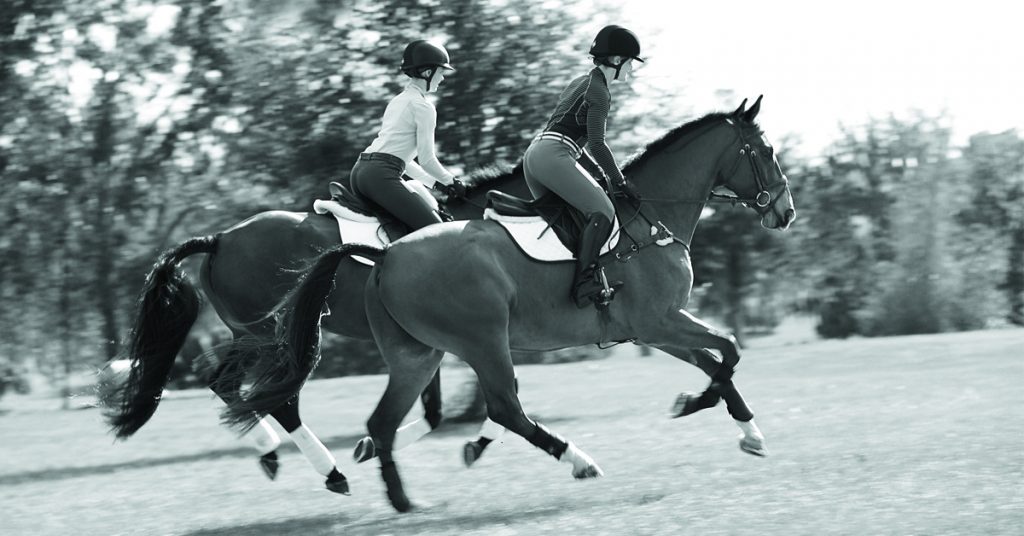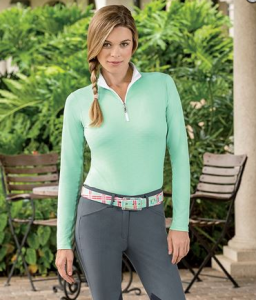 Do you know how to choose a shirt that keeps you cool rather than one that makes you feel like a wet sponge? A wardrobe of summer shirts is a must for any rider, but not all tops are equal. Choosing one with the right fabric properties can make a difference in your comfort level. Let us uncover the secrets to fabric terms that can help you make good choices.
Do you know how to choose a shirt that keeps you cool rather than one that makes you feel like a wet sponge? A wardrobe of summer shirts is a must for any rider, but not all tops are equal. Choosing one with the right fabric properties can make a difference in your comfort level. Let us uncover the secrets to fabric terms that can help you make good choices.
Breathable
Breathable fabric is woven so that holes, tiny or visible, allow vapor to pass through. This means that warm, moist air from your body escapes. Fabrics can also be chemically treated to vent inner air while providing water resistance. Breathable fabrics can be natural, such as cotton, or manmade, such as polyester.
A 100% cotton tee is a breathable wardrobe staple everyone owns. Although it lets your body heat escape, your perspiration is absorbed by the fabric, which becomes wetter the more you perspire. It’s slow to dry, and if you enter a cool area, its dampness makes you feel chilled. Choose tops of breathable fabric with no other properties on cooler days, for times when you won’t ride hard or use them as middle or top layers. For hot days, look for clothing that provides extra benefits.
Moisutre-Wicking
Moisture-wicking fabric is either constructed in a funnel-like weave or chemically treated to transport wetness from the inner surface to the outer surface. There, moisture evaporates efficiently, so the fabric doesn’t feel heavy or wet. A garment made of moisture-wicking fabric will keep you dry and feeling cooler. The material can be naturally wicking, such as wool, or manmade, such as polyester.
Cooling Fabrics
IceFil®, and similar proprietary fabrics, use chemical treatments to convert perspiration to energy. The conversion results in a cooling sensation on your skin that can make you feel some degrees cooler, and it works best in high humidity. Cooling fabrics are fashioned into tanks, tees and, because of their cooling action, can be found in long sleeve tops for sun coverage that doesn’t make you feel overheated.
Ultraviolet Protection Factor (UPF)
All fabrics offer some level of ultraviolet (UV) protection, but some are rated with a UPF. The weave and the denier of any fabric contribute to its UV protection factor. UV rays penetrate fabric through tiny holes in the weave. A tightly woven fabric naturally offers more coverage than a loosely woven fabric. A heavier fabric offers more coverage than a thin fabric. However, lightweight summer fabrics can offer enhanced UV protection through the use of finishing treatments that block UV rays. What does a fabric rating of UPF50 mean? It indicates that 1/50th of UV rays can penetrate the fabric.
Best of All Worlds
Clothing that offers a combination of breathability and moisture wicking is a must for staying comfortable on a hot day. Look for these properties in summer riding shirts, as well as breeches, riding tights, socks and riding gloves. For the ultimate comfort in high humidity, look for clothing made of cooling fabric. Most garments made of cooling fabric have a UPF rating, but you’ll also find moisture-wicking garments that come with a rating, too.



